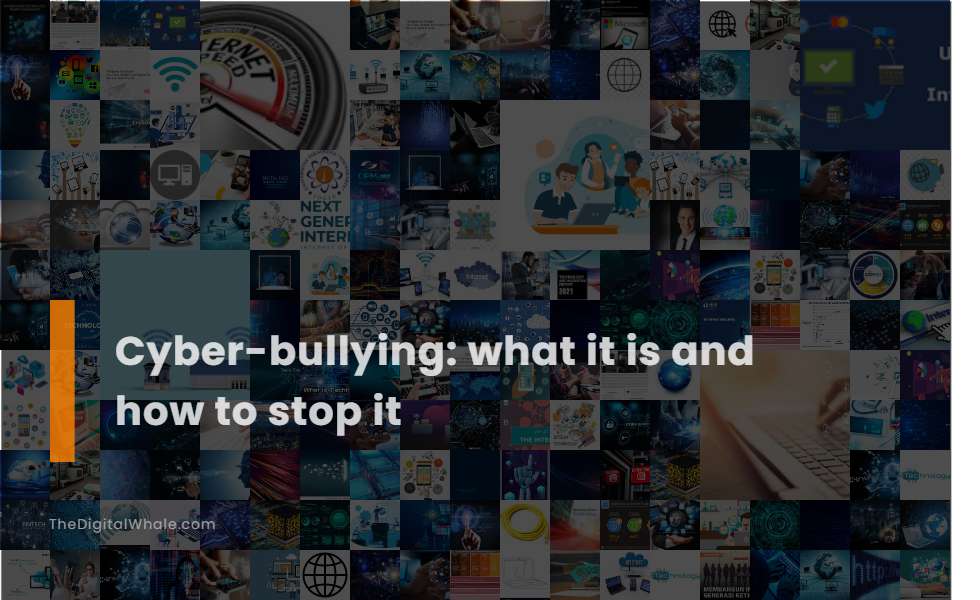Cyber-Bullying: What It Is and How To Stop It
What is Cyberbullying and what can be done to stop it? What is cyberbullying and how can it be stopped? Let's find out more about Cyber-Bullying: What It Is and How To Stop It.

Definition of Cyberbullying: Use of technology to harass, threaten, embarrass, or target another person.
Cyberbullying is a pervasive issue that leverages electronic communication to harass, threaten, or humiliate individuals. It manifests through actions such as sending mean texts or emails, posting hurtful messages on social media, spreading rumors, and circulating false or embarrassing information about someone. This harmful behavior typically involves using digital devices to send, post, or share negative, harmful, or mean content across various online platforms. In essence, cyberbullying utilizes technology to embarrass, threaten, or target others through mean texts, tweets, or posts. Such activities can significantly impact individuals by causing emotional pain and distress. For a comprehensive understanding of this digital menace, Social Media Victors provides valuable insights into the nature and prevention of cyberbullying. Given its widespread ramifications, tackling cyberbullying requires a collaborative approach involving both awareness and proactive measures.
Common Tactics: Posting rumors, threats, sexual remarks, personal information, or hate speech.
Cyberbullying involves tactics such as posting rumors, threats, sexual remarks, a victim's personal information, or hate speech, which can include creating fake profiles, exclusion from online groups, harassment, cyberstalking, and denigration to harm or embarrass the victim. For more comprehensive insights on the subject, you can explore the detailed article on Cyberbullying.
Anonymity: Cyberbullies can remain anonymous, making it hard for victims to know their identity.
Cyberbullying often involves anonymity, which makes it difficult for victims to identify their attackers and can embolden bullies, as they believe online anonymity reduces their likelihood of being caught. This anonymity can make the bullying more intense and distressing, as victims may feel constantly threatened and unable to escape the harassment. For more insights on handling such situations, you can refer to the comprehensive resources available on HelpGuide.
Impact: Negatively affects both the bully and the victim, with increased negative effects based on intensity, duration, and frequency.
Cyberbullying negatively affects both the bully and the victim, with increased negative effects based on the intensity, duration, and frequency of the bullying. It can lead to mental health issues such as depression, anxiety, and low self-esteem, as well as physical problems like headaches and stomachaches, and can have long-lasting emotional and psychological consequences. For further information on this detrimental phenomenon, you can visit the Wikipedia page on Cyberbullying, where comprehensive details outline its profound impact.
Privacy Settings: Adjusting privacy settings on social media to limit who can see personal information.
In the digital age, protecting oneself from cyberbullying is paramount, and adjusting privacy settings on social media is a crucial step in this direction. Setting profiles to private and being vigilant about who can view posts and personal details can significantly reduce exposure to unwanted attention. It is equally important to control friend and follower requests, set up approvals for tagging, and disable location sharing features. For comprehensive guidance on these preventative strategies, consulting resources like those provided by Canopy can be invaluable. Instituting strict privacy settings, such as configuring accounts to "friends only" or "private" and blocking harassing accounts, also contributes greatly to online safety. By carefully managing who can access your posts and profile information, you fortify your defenses against cyberbullying.
Related:
Can you tell me what kind of courtesy is expected when you're online? What is the best way to stay safe while online? Let's find out more about How To Be A Responsible, Safe and Smart Online User.
Think Before Posting: Being cautious about what is posted online as it cannot be erased.
To prevent cyberbullying, it is crucial to think before posting online, ensuring that you do not share anything that could hurt someone else or compromise your own safety, as once posted, content can become public and cannot be fully erased. Before posting online, consider the long-term consequences of your actions, ensuring that the content does not embarrass or negatively portray anyone. Remember that once content is online, it can remain accessible even after deletion due to backups and sharing; you can find more insights on this topic by visiting the Prevent Cyberbullying page. This awareness is key to fostering a safer online environment for everyone.
Blocking the Bully: Using device settings to block emails, messages, or texts from the bully.
Blocking the bully involves using device settings to electronically block emails, messages, or texts from the person doing the bullying, a method that many teens have found effective in stopping cyberbullying. This is a commonly reported and successful response, where teens not only block the person but also often pair this action with other measures such as reporting the abuse or taking a tech break. For more insights on effective methods to combat cyberbullying, visiting Cyberbullying.org can provide valuable strategies and support. By actively engaging with available tools and resources, teens can better protect themselves and create safer online environments.
Educating Yourself and Others: Learning about cyberbullying and spreading awareness to prevent it.
Cyberbullying has become a crucial issue that requires attention from various educational and community stakeholders. Resources such as the Cyberbullying Research Center offer valuable insights with studies, lesson plans, and educational materials aimed at enlightening students, teachers, and parents on how to effectively tackle and prevent cyberbullying. Meanwhile, organizations like Be Web Aware and the Center for Safe and Responsible Internet Use contribute significantly by providing a wealth of information to foster a safer online environment. Additionally, there are pivotal platforms offering bullying prevention training, such as the California Department of Education, which provides online training modules and community-focused resources designed to equip educators, parents, and community members with the skills needed to address bullying through sustainable, community-wide strategies.
Seeking Help: Informing school officials, parents, or other adults about cyberbullying incidents.
If you or your child is a victim of cyberbullying, it is crucial to inform school officials, parents, or other adults immediately. You should request a meeting with the school to discuss the situation and outline a plan to address the bullying, involving teachers, principals, or counselors as necessary. Report cyberbullying incidents to school authorities and adults, as schools have strict protocols for handling such issues. It is important to keep a log of the incidents and alert the school, which can provide counseling services and protection. Additionally, they may involve notifying web services to suspend the bully's account.
Monitoring and Limiting Technology Use: Using parental controls and monitoring social media use to prevent cyberbullying.
Parents play a crucial role in preventing cyberbullying, and various strategies can be employed to safeguard their children while they navigate the online world. Implementing parental control apps is recommended to monitor and limit technology use effectively, setting clear boundaries and guidelines for internet usage. It is equally important for parents to maintain open lines of communication, enabling children to share their online experiences without fear of losing privileges. According to the insights shared on Safes, educating children on responsible technology use and the significance of reporting any incidents is vital. Parents should learn about and engage with the technology their children use, establish reasonable limits, and monitor virtual friendships closely. Employing filters, setting specific technology use hours, and utilizing safety features on social media platforms can help block or manage cyberbullying instances. Ultimately, a supportive and understanding approach ensures that children feel comfortable and protected in their digital interactions.
Related:
What are the negative effects of using a smartphone? What is the relationship between smartphones and depression? Let's find out more about The Rise of the Smartphone and Its Impact On Teenagers.
